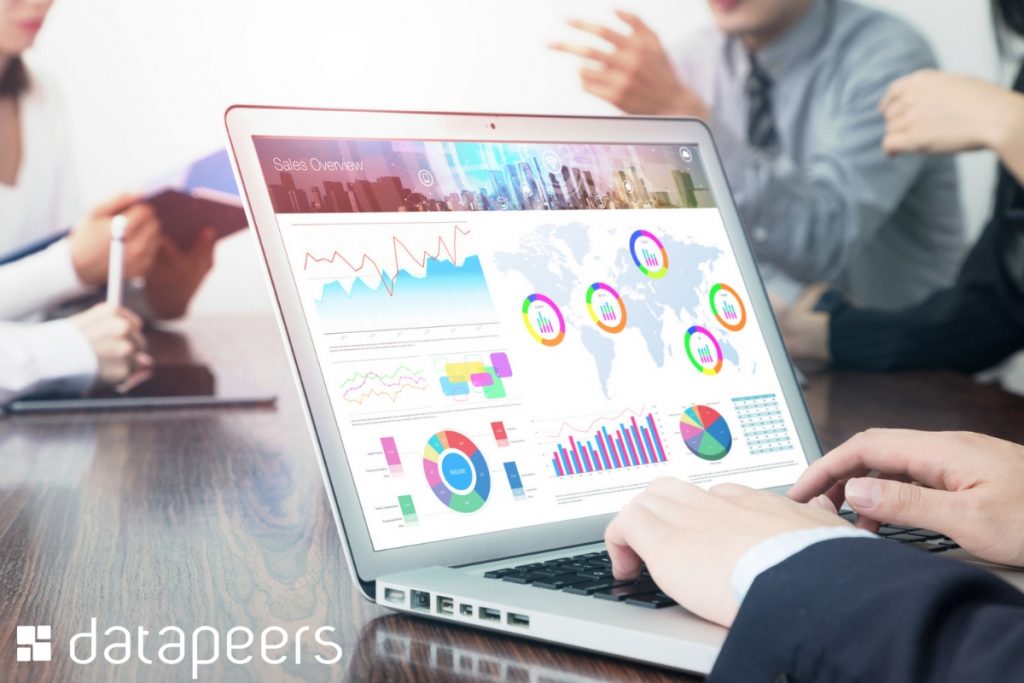All you need to know about Big Data Analytics
Companies today deal with a large amount of data. If companies can not extract reliable information from the data they generate daily, they lose their purpose. Only with correct and up-to-date information will companies be able to make the right decisions for the future of the business. Thus, it is critical that they use the right tools to extract the maximum data value, whether ERP or real-time business monitoring system such as Multipeers. We’ve prepared an article with everything you need to know about Big Data Analytics! Stay with us!
What is Big Data?
Big Data is the term that describes the immeasurable volume of data (structured or otherwise) that has a daily business impact. More important than the amount of data, is what companies can effectively do with this data. Big Data is associated with 3 V’s: data volume, data variety, and data speed. Big Data relates to huge amounts of data produced by human interaction with technology, plus the information that is generated by communication between machines. The variety of data relates to the multiple sources of information that companies deal with daily (posts on social networks, financial information, marketing information, among many others). The speed with which data is produced is increasing and companies need to use tools such as Multipeers that allow them to analyze in real time what is going on in the business.
Types of big data analysis
Descriptive analysis
This type of Data Analytics answers the question “what is happening now?”. Through the response, companies can analyze data on customer losses, sales for a particular product, and the outcome of launched campaigns. Descriptive analysis allows immediate decisions to be made with a high level of security, since the analysis is based on concrete and current data. The information coming from this type of analysis is usually displayed in graphs and tables, which allows the manager to have an overview of the processes monitored.
Predictive Analysis
Predictive analytics is an advanced form of Data Analytics that aims to answer the question “what will happen?”. It is a type of analysis that makes predictions through probabilities. This analysis is possible thanks to techniques like regression and progression analysis, pattern matching and various types of statistics. This type of Data Analytics is widely used in stock market and investment companies.
Diagnostic analysis
Diagnostic analysis will explain why something happened. This type of analysis will relate all available data and information to find patterns of behavior that may explain the results. It is an important analysis to find problems and above all to avoid repeating them in the future.
Prescriptive analysis
The prescriptive analysis is the analysis of premonition. It answers the question “what could happen if we take this action?”. This type of analysis is very important especially in the sales area. For example, “if we think about giving a 15% discount next month on the company’s lesser-selling product, the likelihood of increased sales is 40%”. The prescriptive analysis raises hypotheses about possible results of actions taken by the company. It is an essential analysis for managers, as it helps them to evaluate the best way to choose a certain strategy to solve a problem.
Advantages of Big Data Analytics
Analyze the business in real time
Information is growing at a very fast pace, which makes its analysis increasingly difficult. The solution is to analyze the data in real time to get the most out of the information. Products like Multipeers allow you to analyze every second what is going on with the business. In this way, you can make the most of the data to make the best decisions for the business. Allying the large amount of data generated in companies to a real-time analysis allows you to gain essential insights for business success.
Better data collection
The data come from the most diverse channels and through Big Data it is possible to centralize them and group them by affinities. It is possible to be closer to the customer through the collection of data through questionnaires, applications, loyalty cards, among other instruments. The data collected is essential for assertive planning of marketing and communication actions.
Greater effectiveness of the business
More than knowing the market, companies are able, through Big Data, to use the data to change the business and increase the return on investment. Using analytical expertise allows companies to create new business indicators and analyze them more comprehensively and objectively. In this way, they will achieve better levels of income that will be reflected in the success of the business.


About the author